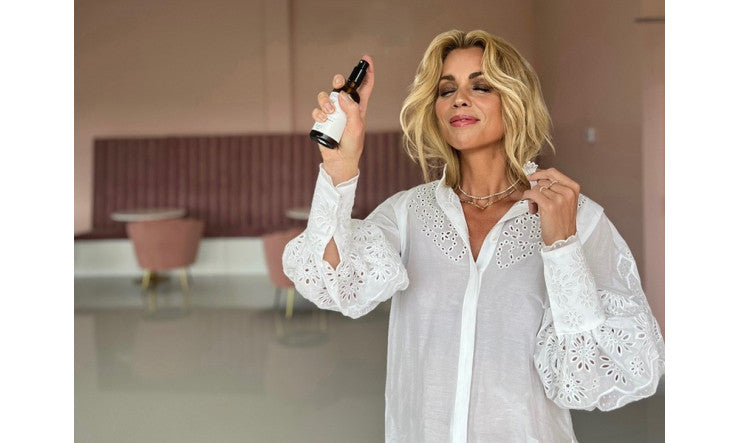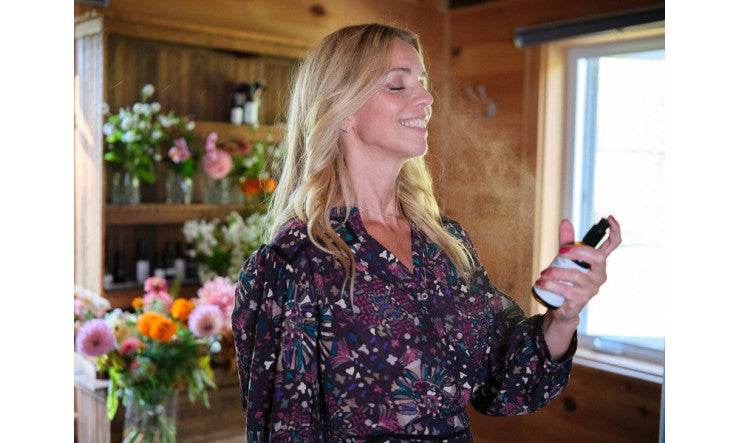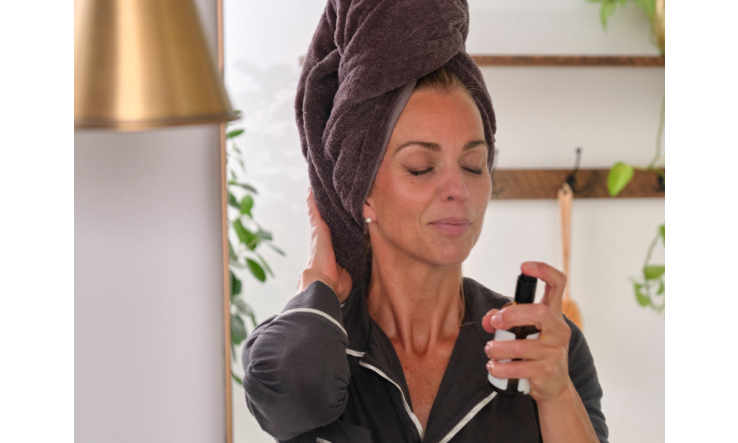Are traditional household products safe?
Some studies claim the opposite, for example:
In a study conducted by researchers at the University of Vancouver and published (February 2020) in the Canadian Medical Association Journal, it was shown that frequent use of household cleaning products early in life is associated with an increased risk of wheezing and childhood asthma. According to them, early exposures to cleaning products may be associated with the development of allergic airway diseases. 1
A similar finding is made in this other study 2 , mentioning that there is growing evidence that cleaning products increase the risk of asthma or wheezing, but this time emphasizing in all age groups, while stating that this is a potentially important public health problem.
1- Jaclyn Parks, Lawrence McCandless, Christoffer Dharma, Jeffrey Brook, Stuart E. Turvey, Piush Mandhane, Allan B. Becker, Anita L. Kozyrskyj, Meghan B. Azad, Theo J. Moraes, Diana L. Lefebvre, Malcolm R. Sears, Padmaja Subbarao, James Scott and Tim K. Takaro. Association of use of cleaning products with respiratory health in a Canadian birth cohort. CMAJ February 18, 2020. 192 (7) E154-E161; DOI: https://doi.org/10.1503/cmaj.190819 https://www.cmaj.ca/content/192/7/E154
2- Elissa M. Abrams. Cleaning products and asthma risk: a potentially important public health concern. CMAJ February 18, 2020, 192 (7) E164-E165; DOI: https://doi.org/10.1503/cmaj.200025 https://www.cmaj.ca/content/192/7/E164
Two other studies, along similar lines, have been reported regarding the harmful effects of household disinfectants and the respiratory discomfort they cause. Read them here!
Here are our healthy and effective alternatives - Big cleaning with purifying formula & Fir soap
To begin, the Purifying Formula , a blend of Pink Grapefruit, Geranium, Lemon Litsea, Lemongrass, Orange and Red Thyme oils.
Its ingredients and some studied properties:
Pink grapefruit
The chemical composition and antimicrobial activity of Citrus Paradisi. L were studied. It showed a broad spectrum of antimicrobial activity against some Gram-positive and Gram-negative microorganisms, with MIC values ranging from 0.78 to 12.50 µL/mL. 1
Grapefruit peel oil (Citrus Paradisi. L) has demonstrated a broad spectrum of antimicrobial activities (limonene was observed to be dominant) against Staphylococcus aureus, Enterococcus faecalis, Staphylococcus epidermidis, Escherichia coli, Salmonella typhimurium… 2
Geranium
The chemical composition of geranium oil is of high quality with citronellol and geraniol alcohols as the dominant compounds. It has been reported that P. graveolens essential oil exhibits high antifungal activity against various fungal strains which can be profitably explored. 3
Lemon litsea
As a major component of Litsea cubeba L essential oil, citral might be responsible for antibacterial activities. 4
Lemongrass
The main active constituents of lemongrass oil that give it its distinct aroma are: citral, neral, and geraniol. Lemongrass oil has been identified to possess antidepressant, antioxidant, antiseptic, sedative, nervine, bactericidal, and fungicidal properties. As a bactericidal agent, lemongrass oil has been found to be effective against many bacterial species, including Acinetobacter baumanii, Aeromonas veronii, Enterococcus faecalis, Escherichia coli, Klebsiella pneumonia, Salmonella enterica, Serratia marcesens, Proteus vulgaris, Enterobacter aerogenes, Corynebacterium equii, Staphylococcus aureus, and so on. 5
Orange
In sweet orange essential oil (Citrus sinensis L.), a total of 25 compounds were identified, of which 90% by weight were d-limonene. D-limonene 1,2-epoxide and β-mircene showed high antibacterial activity. Tests confirm a strong larvicidal activity for this essential oil, characterized by the highest concentration of limonene as a larvicidal agent. 6
The antibacterial activities of the essential oil were evaluated on three selected bacteria. GC/MS analyses revealed that the orange peel oil extract is mainly composed of terpene hydrocarbons, oxygenated compounds, and non-volatile compounds, many of which constitute the antibacterial properties of the extract. It can be concluded that hot ethanol can be used for the extraction of orange peel oil in the production of drugs used in the treatment of Escherichia coli and Staphylococcus aureus. 7
Thyme with Thymol
Thymol (10-64%) is one of the major constituents of thyme essential oils (Thymus vulgaris L., Lamiaceae), a medicinal plant with multiple therapeutic properties. Interest in the formulation of thymol-based pharmaceutical, nutraceutical, and cosmeceutical products is due to several studies that have evaluated the potential therapeutic uses of this compound for the treatment of disorders affecting the respiratory, nervous, and cardiovascular systems. In addition, this compound also exhibits antimicrobial, antioxidant, anticancer, anti-inflammatory, and antispasmodic activities, as well as potential as a growth promoter and immunomodulator. 8
Thymol, the main active ingredient responsible for the activity of thyme essential oil, has been shown to have antiseptic, antibacterial, antifungal, anthelmintic, antiviral, antioxidant, expectorant, antispasmodic, carminative, diaphoretic, sedative, antirheumatic, and even anticancer, antihyperlipidemic and antihyperglycemic action. 9
Thymus vulgaris oil is a combination of monoterpenes and these act as antioxidant, antimicrobial, medicinal, antitussive, antispasmodic and antibacterial activities. 10
References:
1- Weihui Deng, Ke Liu, Shan Cao, Jingyu Sun, Balian Zhong and Jiong Chun. Chemical Composition, Antimicrobial, Antioxidant, and Antiproliferative Properties of Grapefruit Essential Oil Prepared by Molecular Distillation. Molecules. 2020 Jan; 25(1): 217. doi: 10.3390/molecules25010217, https://www.ncbi.nlm.nih.gov/labs/pmc/articles/PMC6982870/
2-Burcu Uysal, Fazli Sozmen, Ozghour Aktas, Birsen S Oksal. Essential_oil_composition_and_antibacterial_activity of the grapefruit Citrus Paradisi L peel essential oils obtained by solvent-free microwave extraction Comparison with hydrodistillation. April 2011 International Journal of Food Science and Technology 46(7):1455 - 1461 DOI: 10.1111/j.1365-2621.2011. 02640.x https://www.researchgate.net/publication/230216794_Essential_oil_composition_and_antibacterial_activity_of_the_grapefruit_Citrus_Paradisi_L_peel_essential_oils_obtained_by_solvent-free_microwave_extraction_Comparison_with_hydrodistillation
3- Ana M. Džamić, Marina D. Soković, Mihailo S. Ristić, Slavica M. Grujić, Ksenija S. Mileski, Petar D. Marin. Chemical composition, antifungal and antioxidant activity of Pelargonium graveolens essential oil. Journal of Applied Pharmaceutical Science Vol. 4 (03), pp. 001-005, March 2014 DOI: 10.7324/JAPS.2014.40301 ISSN 2231-3354 https://www.japsonline.com/admin/php/uploads/1200_pdf.pdf
4-Antibacterial Activity and Mechanism of Litsea cubeba L. Essential Oil Against Acinetobacter baumannii. First Published March 8, 2021, https://journals.sagepub.com/doi/10.1177/1934578X21999146
5-BCJ De Silva, Won-Gi Jung, Sabrina Hossain, SHMP Wimalasena, HNKS Pathirana, and Gang-Joon Heo. Antimicrobial property of lemongrass (Cymbopogon citratus) oil against pathogenic bacteria isolated from pet turtles. Lab Anim Res. 2017 Jun; 33(2): 84–91. doi: 10.5625/lar.2017.33.2.84. PMCID: PMC5527151. PMID: 28747972. https://www.ncbi.nlm.nih.gov/labs/pmc/articles/PMC5527151/#:~:text=The%20results%20revealed%20that%20the,resistance%20was%20observed%20in%20P.
6- Jônatas Souza, Glaciene S. Santos, Thallysson C. Barbosa, André LS Santos, Lucas G. Menezes, Luciana N. Andrade, Cristiane Bani, Victor HV Sarmento, Rogéria Nunes, Aleksandra Zielinska, Marcelo C. Mendonça, Juliana C. Cardoso, Antonello Santini, Eliana B. Souto, and Patrícia Severino. Citrus sinensis Essential Oil-Based Microemulsions: Green Synthesis, Characterization, and Antibacterial and Larvicidal Activities. CS Food Sci. Technol. 2021, 1, 3, 462–469 Publication Date: March 15, 2021, https://doi.org/10.1021/acsfoodscitech.0c00150
7- Nwachukwu BC, Taiwo MO, Olisemeke JK, Obero OJ and Abibu WA. Qualitative Properties and Antibacterial Activity of Essential Oil obtained from Citrus sinensis Peel on Three Selected Bacteria. July 11, 2019 DOI: 10.26717/BJSTR.2019.19.003323 https://biomedres.us/fulltexts/BJSTR.MS.ID.003323.php
8-Bahare Salehi, Abhay Prakash Mishra, Ila Shukla, Mehdi Sharifi-Rad, María Del Mar Contreras, Antonio Segura-Carretero, Hannane Fathi, Nafiseh Nasri Nasrabadi, Farzad Kobarfard, Javad Sharifi-Rad. Thymol, thyme and other plant sources: health and potential use., Phytother Res. September 2018; 32 (9): 1688-1706. doi:10.1002/ptr.6109. Published online May 22, 2018. https://pubmed.ncbi.nlm.nih.gov/29785774/
9-Adam Kowalczyk, Martyna Przychodna, Sylwia Sopata, Agnieszka Bodalska, and Izabela Fecka. Thymol and thyme essential oils-New perspectives on selected therapeutic applications. Molecules. 2020 Sep; 25(18): 4125. Published online September 9, 2020. doi: 10.3390. https://www.ncbi.nlm.nih.gov/pmc/articles/PMC7571078/
10-P. Reddy, K. Ravi Vital, S. Satyam. Review on Thymus vulgaris Traditional Uses and Pharmacological Properties DOI:10.4172/2167-0412.1000164 Corpus ID: 85743687, Published 26 August 2014. https://www.semanticscholar.org/paper/Review-on-Thymus-vulgaris-Traditional-Uses-and-Reddy-RaviVital/8fcd566cee77def3b700d5765ca4e2c6f3950187
AND our Fir Hand Soap
This soap is reminiscent of our enchanting pine forests. The pleasant scent of pine accompanied by vanilla, myrrh, and sandalwood, everything to make cleaning joyful and enjoyable!
For the essential oils and vanilla it contains, here are some properties:
Fir tree
It has multiple properties such as antifungal and antibacterial. 1
1. Gérardin P, Hentges D, Gérardin P, Vinchelin P, Dumarçay S, Audoin C, Gérardin-Charbonnier C. Knotwood and Branchwood Polyphenolic Extractives of Silver Fir, Spruce and Douglas Fir and Their Antioxidant, Antifungal and Antibacterial Properties. Molecules. 2023 Sep 1;28(17):6391. doi:10.3390/molecules28176391. PMID: 37687221; PMCID: PMC10489691.
Vanilla
In addition to its role as a flavoring agent, vanillin has been shown to exert potent antimicrobial effects against certain bacteria and yeasts. 1
1.Ngarmsak M, Delaquis P, Toivonen P, Ngarmsak T, Ooraikul B, Mazza G. Antimicrobial activity of vanillin against spoilage microorganisms in stored fresh-cut mangoes. J Food Prot. 2006;69(7):1724–1727.
Myrrh
This gum resin has many benefits, such as: antibacterial, antifungal, antiparasitic, antiseptic. 1
1.https://draxe.com/essential-oils/myrrh-oil/
Sandalwood
This oil has also demonstrated biological activity as an antimicrobial agent. 1
1. Misra BB, Dey S. Comparative phytochemical analysis and antibacterial efficacy of in vitro and in vivo extracts from East Indian sandalwood tree (Santalum album L.). Lett Appl Microbiol. 2012 Dec;55(6):476-86. doi: 10.1111/lam.12005. Epub 2012 Oct 26. PMID: 23020220.
To better understand the formulation of our hand soaps, click here!
Here's our recipe for a completely eco-friendly and healthy shower glass cleaner for everyone! The joy of 100% natural, pure & active!
- A bottle of Purifying Formula
- 130 ml of vinegar
- 70 ml of your natural dish soap
- 210 ml of water
To see Jocelyne's cleaning tips using our household products, click here! Also available on video!
Here, Jacynthe & Jocelyne discuss spring cleaning on video.


































































Leave a comment